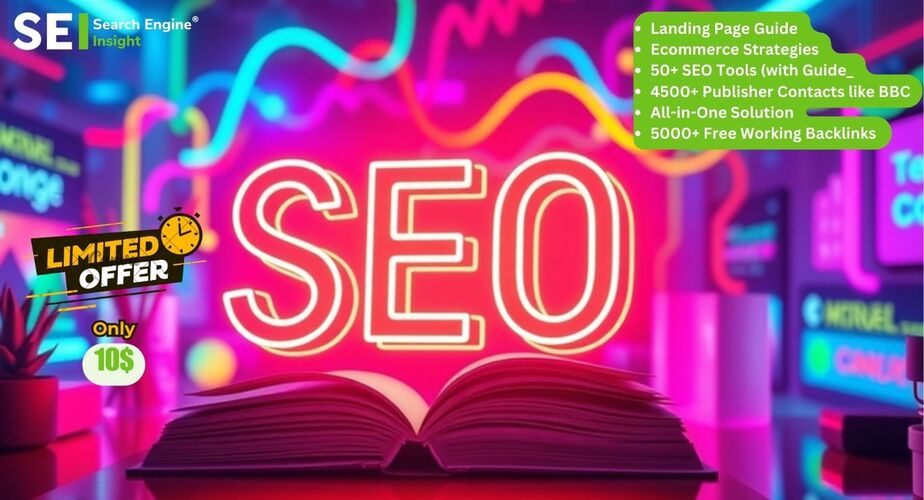Building a SaaS Landing Page that Converts: Tips and Tricks
The landing page is the digital storefront of any company providing SaaS. It’s the first point of contact for customers and crucial for driving conversions. A SaaS landing page requires design finesse, and an understanding of visitor’s intent and requirements. There are several ways to build a SaaS landing page, but the best practices appear when it is build from the perspective of the visitors.
Understanding the Anatomy of a High-Converting SaaS Landing Page
-
Headline and Subheadline: Captivate Visitors Instantly
Your headline should be concise, clear, and compelling. It should communicate your unique value proposition and resonate with your target audience’s pain points. Pair it with a sub headline that provides additional context and entices visitors to learn more.
-
Hero Banner or Video: Visual Storytelling
A captivating hero image or video can convey the benefits of your SaaS product more effectively than paragraphs of text. Choose creatives or videos that showcase your product in action or highlight its key features. Ensure that the visual aligns with your branding and messaging that is followed across all your digital assets.
-
Call-to-Action (CTA): Clear and Actionable
Your CTA button should stand out prominently on the page and use language that encourages immediate action. Whether it’s “Start Your Free Trial,” “Request a Demo,” or “Learn More,” make sure the CTA is compelling and aligned with the visitor’s intent.
-
Features and Benefits: Highlight Value Proposition
List the core features of your SaaS website builder along with the benefits they offer. Focus on how your product solves specific pain points or improves efficiency for your target audience. Use concise bullet points or short paragraphs to keep the information easily digestible.
-
Social Proof: Build Trust and Credibility
Include customer testimonials, case studies, or logos of reputable companies that use your SaaS product. Social proof builds trust and reassures visitors that they’re making the right decision by choosing your solution. Ensure that the testimonials are genuine and relatable to your target audience.
-
Trust Signals: Establish Credibility
Display trust badges, security certifications, or industry awards to instill confidence in your brand. Place them strategically on the landing page, preferably near the CTA, to maximize their impact.
-
Visual Hierarchy and Readability: Guide the Eye
Arrange content in a visually appealing manner, with clear hierarchy and spacing. Use headlines, subheadings, and bullet points to break up text and improve readability. Ensure that the most important elements, such as the headline, CTA, and key features, are easily noticeable and accessible.
Best Practices for Higher Conversion Rates
-
A/B Testing: Continuously Experiment and Optimize
A/B testing means comparing different variations of your landing page elements, such as headlines, CTAs, and visuals. Analyze the data to identify which variations perform best in terms of conversion rates. Continuously optimize and refine your landing page based on the insights to maximize conversions.
-
Mobile Responsiveness: Prioritize Mobile Users
With an increasing number of users accessing the internet via mobile devices, it’s essential to ensure that your SaaS landing page is fully responsive. Optimize the layout and design for various screen sizes to provide a seamless experience for mobile users.
-
Optimized Loading Speed: Minimize Friction
Fast loading speed is crucial to control bounce rates. Optimize your landing page’s performance by minimizing image sizes, browser caching, and using asynchronous loading for scripts. Conduct regular performance audits to identify and address any bottlenecks that may affect the loading speed.
-
Personalization: Tailor Content to Visitor Needs
Implement dynamic content and personalized messaging based on visitor demographics, behavior, or referral source. Personalization enhances relevance and engagement, increasing the likelihood of conversion. Use data analytics and segmentation to deliver targeted content that resonates with different audience segments.
-
Scarcity and Urgency: Create a Sense of FOMO
Incorporate elements that invoke a sense of urgency to incentivize action and prevent procrastination. Limited-time offers, countdown timers, or stock availability indicators can create a sense of fear of missing out (FOMO) and prompt visitors to act quickly.
Common Pitfalls in SaaS Landing Page Design to Avoid
-
Cluttered Design: Overwhelming Visitors
Avoid cluttering your landing page with excessive text, images, or unnecessary elements. A cluttered design can confuse visitors and distract them from the primary message and CTAs. Maintain a clean and minimalist layout that guides visitors’ attention to the most important information.
-
Lack of Clarity: Unclear Value Proposition
Ensure that your language used in the landing page is clear and easily understandable. Avoid vague or jargon-filled language that may confuse visitors. Clearly communicate the benefits of your SaaS product and why it’s the ideal solution for their needs.
-
Poor Navigation: Confusing User Experience
Keep navigation simple, guiding visitors seamlessly through the conversion funnel. Avoid overwhelming users with too many options or complex navigation menus. Limit distractions and ensure that the path to conversion is clear and frictionless.
-
Unoptimized Forms: Lengthy or Complicated
Despite everything in place, users often bounce-off from landing pages right when they start filling-up the forms as they turn out to be excessively lengthy. Keep forms concise, requesting only essential information from users. Use smart form fields, autofill features, and inline validation to streamline the form completion process and reduce bounce rates.
-
Ignoring Analytics: Neglecting Data Insights
Regularly monitor and analyze your landing page performance using web analytics tools. Track key metrics such as bounce rate, conversion rate, and average session duration to gain insights into visitor behavior. Use these insights to identify areas for improvement and optimize your landing page for better results.
Wrapping Up
Building a SaaS landing page that converts requires a strategic blend of design, messaging, and optimization techniques. By understanding the essential elements, implementing best practices, and avoiding common pitfalls, you can create a high-converting landing page that effectively engages visitors and drives conversions for your SaaS product.




